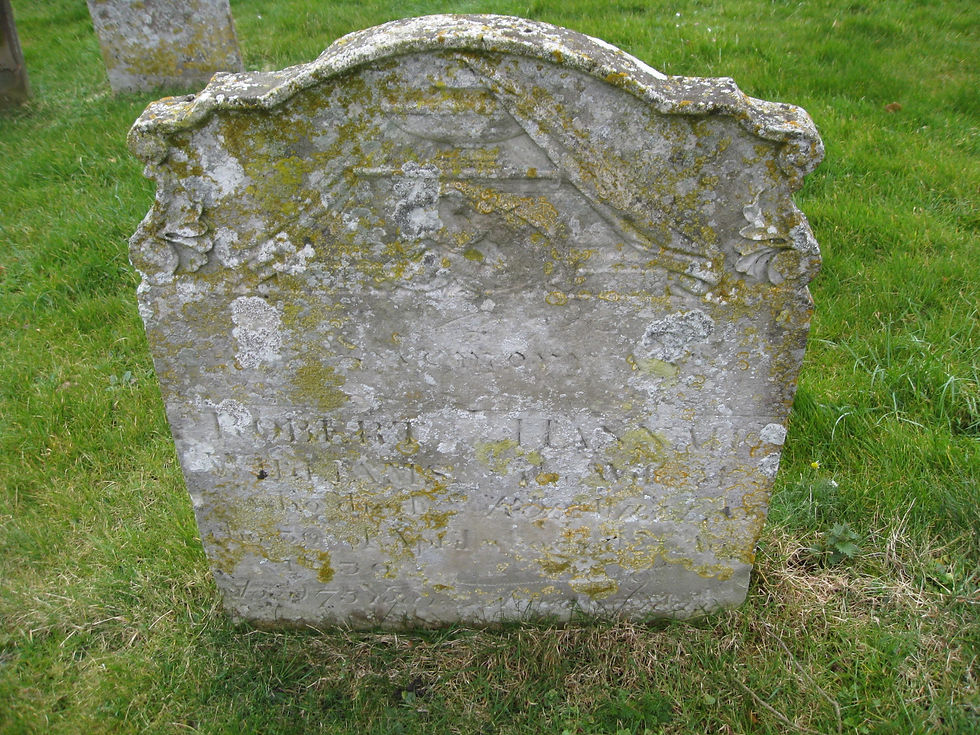Robert Williams, Norfolk drover
- Jessica Feinstein
- Aug 19, 2022
- 2 min read
I was very happy to discover that one of Ari’s ancestors was a drover.

Sheet from a drawing book, cattle and sheep driven over a bridge at left, by mounted farmer, drover on foot and dog at right, ruins behind. 1799, republished 1800
Soft-ground etching
His name was Robert Williams, and he was Ari’s 7x great-grandfather. He was born on 15 June 1755 in Calthorpe, Norfolk, and his parents were James and Mary.
Robert’s wife was called Hannah Halfnights, and they married on 7 Oct 1776 at the church in Aldborough.

They had eight children between 1776 and 1794: James, Thomas, William, John, Briton (or Brettingham), Mary, Paul and Elizabeth. The family lived in Cawston.

In 1811, this notice appeared in the Norfolk Chronicle:

The following year, this was published in the same paper, which is how I discovered his occupation.

Norfolk Chronicle, 11 January 1812. Image © The British Library Board
The distance from Cawston to Smithfield Market is 120 miles. Smithfield Market was held every week on Mondays and Fridays. Robert's route took him through Weston Longville (the Red Hart); Attleborough (the Crown Inn; see https://www.norfolkpubs.co.uk/norfolka/attleborough/attlcr.htm), and Market Harling (East Harling; the Bull Inn).

An account by Cynthia Brown, “Drovers, cattle and dung: the long trail from Scotland to London” (Proceedings of the Suffolk Institute, xxxviii, part 4, 1996) explains that they would have walked twelve to fifteen miles a day. She says “The East Anglian drover … had to be a man of integrity, financing the overheads of the journey and returning with his clients’ profit in cash or short-date bills on a local bank, which he would dispense on settlement day” (p. 437) “On the outskirts of London there were ‘layers’ ... where the beasts could be fed, watered and rested before they were collected by the licensed London drovers in the early hours of market day” (p. 438). The coming of the railways and increased land enclosure eventually brought droving as a way of life to an end.
Robert died on 30 April 1830.

Norfolk Chronicle, 22 May 1830. Image © The British Library Board
He was buried on 5 May by the curate, Josiah Webb Flavell.
I was able to obtain a photograph of the grave from the Cawston Heritage website, reproduced here with the permission of Cawston Historical Society.

I also ordered a copy of his will from the Norfolk Archives, written on 9 January 1826.

His wishes were that his house and land in Cawston should be offered first to his son John, but that if John did not want to purchase it, it should be offered to his son Britton. If he also refused it, the executors should dispose of it. They should also sell his household furniture, plate, linen, china, glass, implements of husbandry, dead and live stock of every kind and all personal property. His sons Thomas, John and Britton and his daughter Elizabeth, the wife of William Bacon, were to receive legacies of £50 each within six months of his death. The remainder of the estate would go to all of Robert’s children (named in the will as Thomas, William, John, Britton, Paul, Mary the wife of James Eason [Easton] and Elizabeth the wife of William Bacon) equally.
Ari, this is how you are related to Robert:





Comments